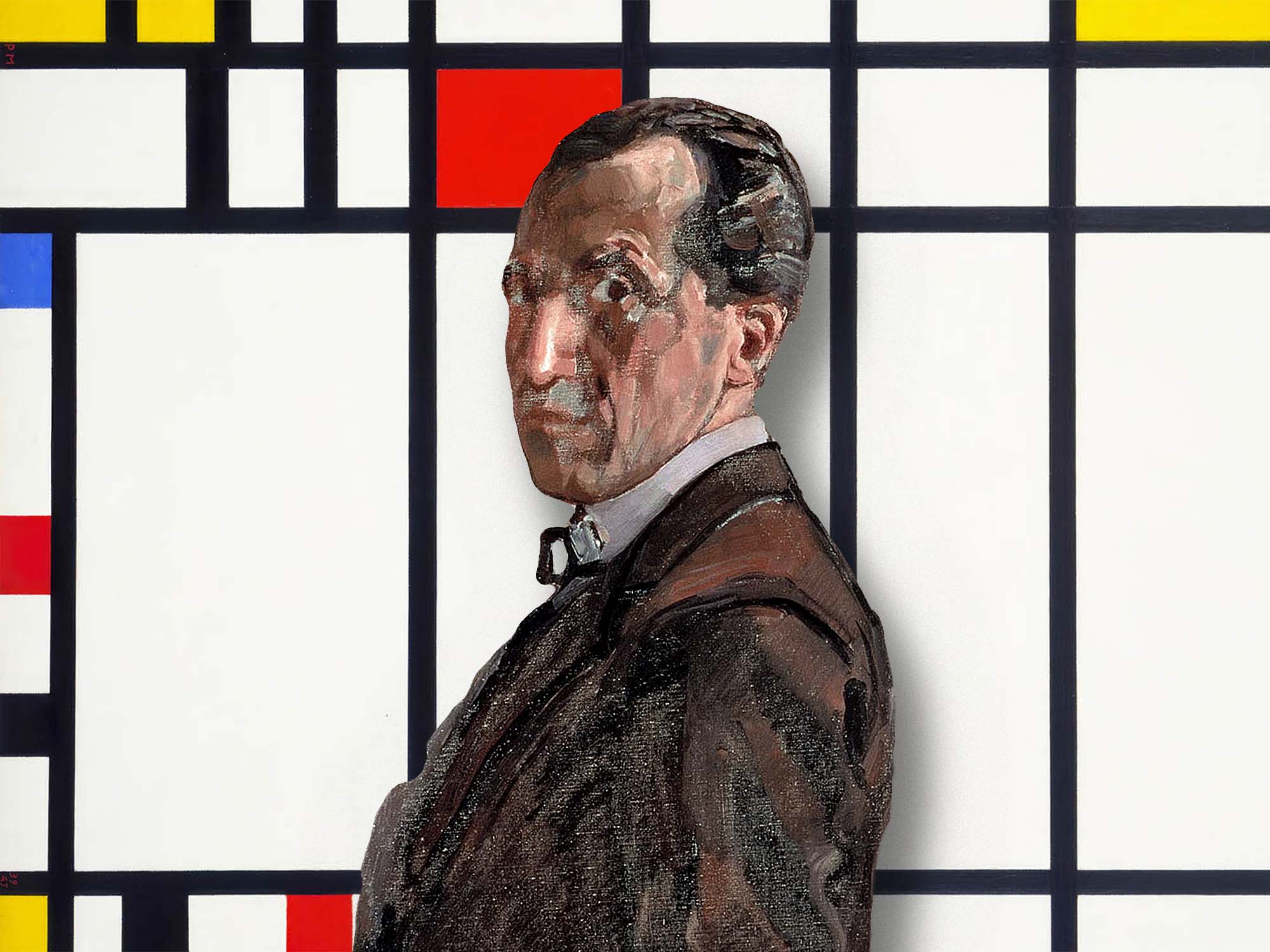Born on March 7, 1872, in Amersfoort, the Netherlands, Pieter Cornelis Mondriaan, known to the world as Piet Mondrian, would become one of the most renowned contributors to abstract art in the 20th century. His journey through artistic styles – from early landscape and figurative work to pioneering abstract concepts – was deeply intertwined with his philosophical beliefs, grounding his creative process in a complex network of theory, spirituality, and aesthetics.
In his early years, Mondrian's work was deeply rooted in the traditional Dutch style of painting. He was trained by his father, a schoolmaster and amateur artist, and later attended the Rijksakademie in Amsterdam. His early works largely consisted of landscapes and still-life compositions that bore traces of Impressionism and Post-Impressionism, reflecting his intimate relationship with the Dutch countryside and its windmills, fields, and rivers. While the works were indeed largely traditional in style, early traces of his fluidity with colour started to appear in his landscape paintings, drawing on the theory and practice of the Impressionist, showing his desire to start to bend pre-existing artistic rules to create his own new style.
However, Mondrian's aesthetic would undergo a dramatic transformation after moving to Paris in 1911. Immersed in the city's vibrant artistic life, he found himself particularly drawn to the revolutionary Cubist works of Pablo Picasso and Georges Braque. While they retained a semblance of the real world, these paintings broke down subjects into geometric shapes and planes, playing with perspective in a way that fascinated Mondrian.
Mondrian's embrace of Cubism marked his initial foray into abstract art. His works during this period – still influenced by the natural world but increasingly abstracted – demonstrate his gradual shift away from figurative representation. His paintings started to be composed of more simplified forms and a reduced colour palette.
The defining leap in Mondrian's artistic journey, however, came with his involvement in the De Stijl (The Style) movement, which he co-founded in 1917, and the development of his theory of Neoplasticism. This artistic philosophy, deeply influenced by his interest in Theosophy, sought to express a form of universal harmony through the purest means: straight lines, primary colors, and non-colors (black, white, and grey).
Piet Mondrian's artistic vision was deeply influenced by Theosophy, a spiritual movement established in the late 19th century, which sought to explore the mystical and occult aspects of reality. Mondrian was drawn to its ideals of universal harmony and the underlying unity of all things, and it was this spiritual philosophy inspired his artistic shift towards abstraction and the development of Neoplasticism. His abstract compositions were not random arrangements of lines and colours; rather, they were spiritual attempts to represent the balanced, harmonious reality that Theosophy postulated. For Mondrian, his stark grids and primary colours were ways of expressing these fundamental spiritual truths, making his art a form of visual philosophy as much as an aesthetic endeavour.
Mondrian's paintings from this period, such as the iconic "Composition with Red, Blue, and Yellow" (1930), are emblematic of his Neoplasticist ideals. They feature a grid of black lines enclosing spaces filled with primary colours or left white, creating a sense of balance and tension that transcends the traditional notions of representation.
Simultaneously, in Germany, the Bauhaus School was advocating a similar reductionist approach, albeit in a different medium. Founded by Walter Gropius in 1919, Bauhaus emphasised the unity of art, craft, and technology. Its proponents, like Mondrian, strived for purity of form and function, embodied in their minimalist architecture and design.
Mondrian and Bauhaus artists shared a common philosophical ground, seeking to distill art to its fundamental elements. Bauhaus designers, like Mondrian, removed ornamental elements in favour of simplicity and efficiency. There was a mutual understanding of art's role as a harmonising force in a rapidly modernising world, and both sought to integrate their artistic principles into everyday life.
Mondrian's impact on the world of art is profound, not only in the aesthetic realm but also in his philosophical and theoretical contributions. His Neoplasticist ideas, alongside the Bauhaus principles, provided a foundation for the Minimalist and Conceptual art movements that emerged in the mid-20th century. His exploration of abstraction paved the way for artists to step beyond the bounds of representational art, expanding the horizons of artistic expression.
His philosophical influence is equally notable. His belief in art as a medium for spiritual harmony and the universal truths echoed in the works of many later artists and theorists. His ideas, aligned with those of the Bauhaus, contributed to the understanding of art as an integral part of everyday life, not just an aesthetic pursuit.

Mondrian's aesthetic principles have permeated beyond the realm of fine art, influencing various aspects of visual culture. His distinctive style has been adopted and adapted in fields ranging from architecture and interior design to fashion and graphic design. His abstract, grid-based compositions have become ubiquitous in modern design, demonstrating the enduring relevance of his artistic vision.
Moreover, Mondrian's influence is evident in the works of numerous artists who followed in his footsteps. From the hard-edge paintings of Ellsworth Kelly to the colour field works of Mark Rothko, traces of Mondrian's approach to colour, form, and composition can be discerned. His quest for purity and harmony in art continues to inspire contemporary artists, reaffirming his place as a beacon in the world of abstract art.
Piet Mondrian's journey from Dutch landscapes to abstract masterpieces reflects an artist deeply engaged with his times and philosophies. His move to Paris, his immersion into Cubism, and the development of his Neoplasticist theory marked critical stages in his artistic evolution. His ideas resonated with the concurrent trends at the Bauhaus School in Germany, culminating in a shared aesthetic and philosophy that would influence generations of artists. Mondrian's legacy is a testament to the power of art as a medium of universal expression, transcending the bounds of time and space to continue inspiring creators in the 21st century.
See more from Piet Mondrian here.
















